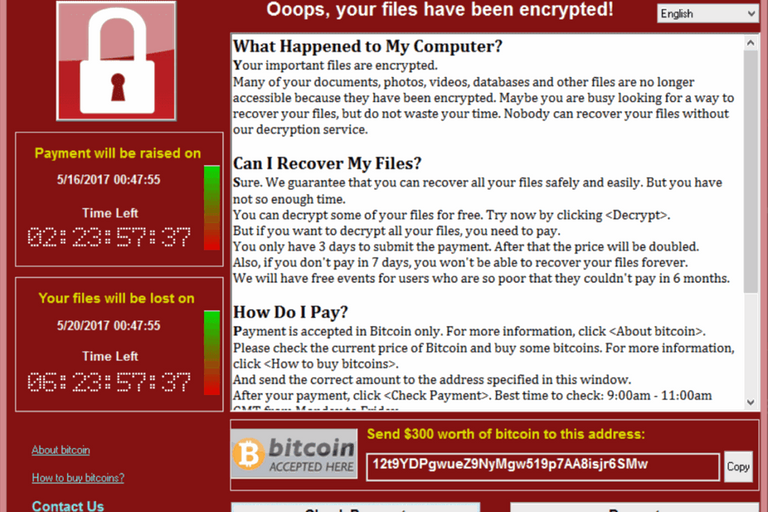A Brief Summary of the Plague That Is...

Malicious viruses have been around since the dawn of the Internet, and time has allowed certain criminal types to hone their devious craft. One particularly brutish method for hackers to monetize their efforts appeared in the form of Ransomware, which lures its victims into having their most precious files hijacked and locked behind an encryption key. In almost all cases, this key can only be retrieved upon paying a set amount in Bitcoin: Your computer is digitally held for ransom.
How Does This Happen?
The primary mode of infiltration is through infected links via E-mail. Unsuspecting individuals may find themselves opening a legitimate looking E-mail message that insists on them following a given link. All it takes is one or two careless clicks to unleash this virtual beast and have you coughing up money under threat of having your files locked away or deleted forever.

Many of us, especially those on a platform such as Steemit, are well aware of the realities of Phishing and cyber-safety. However, the numbers tell a tale of shocking naivety: Between October and December of 2013, about $27 million was paid to CryptoLocker, a new Ransomware distributor at the time, by over 250,000 infected victims.
Today
Ransomware continues to spike in usage, and is not just targeting everyday consumers either. Businesses, hospitals and even a San Francisco rail network have all been politely "asked" to pay up.
There are even certain services on the web that give users access to Ransomware in exchange for a percentage of the ransom. Ransomware-as-a-Service (RaaS) is on the rise, giving those without the knowledge to create these programs the same leverage as those who can. These services may vastly increase the number of occurrences by giving anybody with some Bitcoin sitting around a method of attack.
Prevention Is Key
Here are steps that can be taken to prevent such a thing from happening to you or your business:
• Install a renowned antivirus and anti-malware.
• Do not open links that appear in your Spam folder without good reason. It is estimated that 70% of spam mail contains phishing links or Ransomware.
• Keep offline back-ups of anything you cannot do without. Back-ups are one of the best ways to flip the bird to these types of criminals.
• Do NOT pay the ransom. It’s all about preventative actions, which take the wind right out of the Ransomware sails.

By The Way
Now that the doom and gloom aspect is out of the way, I’d like to introduce myself to the Steemit community! I am @diligence, a current student of Cybersecurity, and am also quite new to the world of cryptocurrencies. Anyway, I figure if I can intervene and bestow any cautiousness to even ONE person, then writing this and any future articles is worth it.
I plan on writing mostly in the realm of Cybersecurity/Technology, but honestly I will be happily contributing to any topic that is interesting! Feel free to share your personal experiences or knowledge on the subject!
Thank you for reading, and be smart out there.
(Also, I have much to learn in the art of compiling articles that aren't total eyesores, be warned.)
Sources:
http://www.zdnet.com/article/cryptolockers-crimewave-a-trail-of-millions-in-laundered-bitcoin/
http://www.bbc.com/news/world-europe-39907965
https://www.cnet.com/how-to/petya-goldeneye-malware-ransomware-protect-yourself-against/
Pictures are a courtesy of Google Images, I did not create them.
Great post.
Thanks for reading and taking the time to comment. Have a nice day and don't click any fishy looking links!
Hey @diligence, welcome to Steemit!
Thanks @unbeaten! Really liking the community here. Have a good one!
Congratulations @diligence! You received a personal award!
You can view your badges on your Steem Board and compare to others on the Steem Ranking
Do not miss the last post from @steemitboard:
Vote for @Steemitboard as a witness to get one more award and increased upvotes!